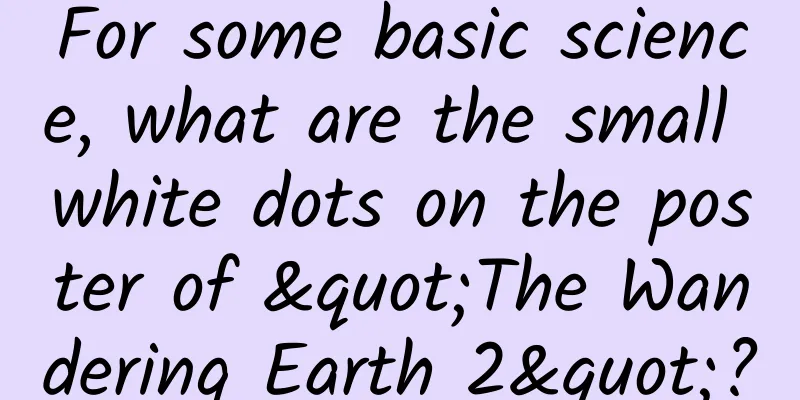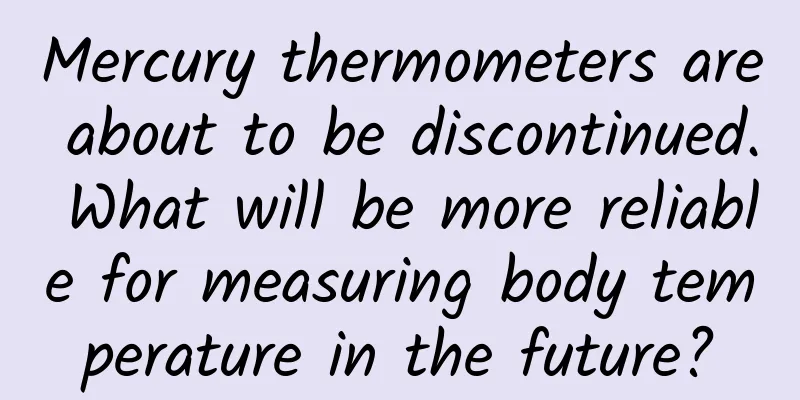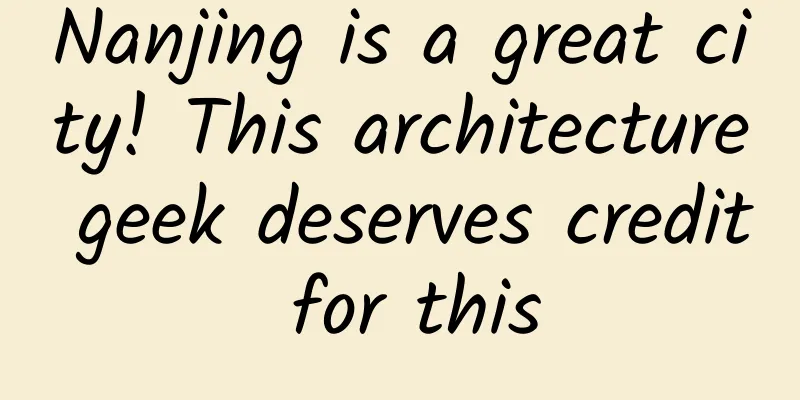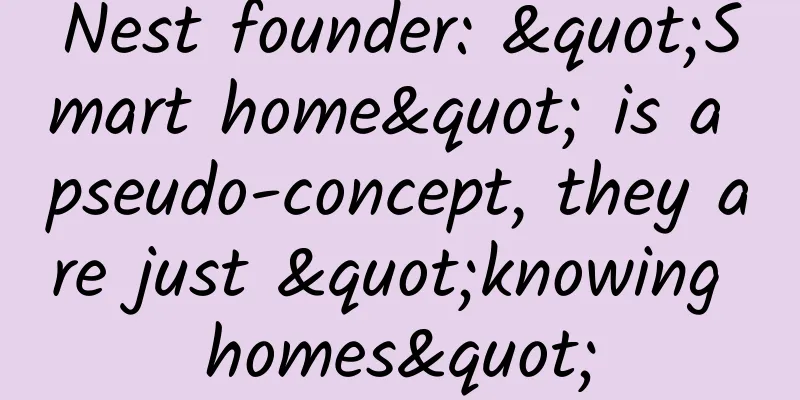Why do most zodiac snakes not look like this? This is actually related to the third mathematical crisis...
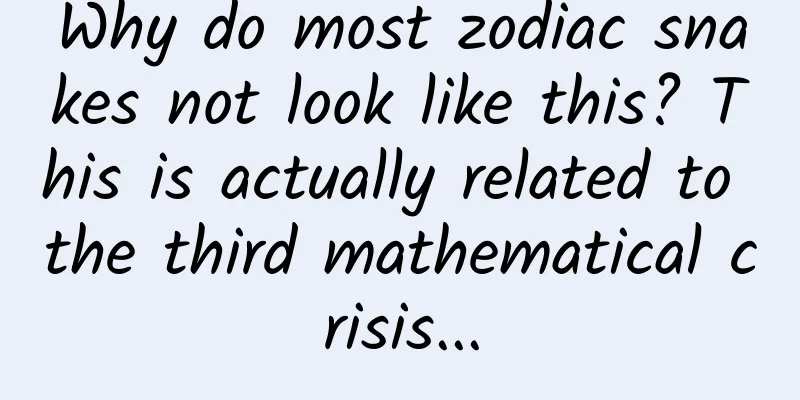
|
Produced by: Science Popularization China Author: Liu Wenjin Producer: China Science Expo 2025 is the Year of the Snake in the lunar calendar, and as usual, we will see many snakes dancing on the covers of magazines and calendars. Most netizens will get goosebumps and go weak when they see a snake. For example, if I want to post a picture, you might suspect that it is going to crawl along the network cable and into your house, so let's send out a warning signal first. Xu Beihong's Chinese painting "The Twelve Zodiac Signs: Snake" However, it is worth being thankful that when depicting the zodiac image of the snake, traditional Chinese culture often uses the "coiled snake" or "dancing golden snake" shapes shown above, instead of the "ouroboros" image. The Ouroboros symbol: a vicious cycle of cause and effect with no beginning or end "Uroboros" is a very ancient symbol, which has a strong symbolic meaning in ancient Egyptian, Greek and Indian civilizations. It is also commonly seen in religious descriptions in West Africa and Central America, and often represents "infinity and cycle", "chaos of the world", "sun" or "mother". The specific shape is roughly a snake/dragon swallowing its own tail, resulting in a ring, which is sometimes displayed in the shape of "8" or "∞". The Ouroboros pattern painted on the outside of Tutankhamun's sarcophagus (1300 BC) (Photo source: egypttoursportal) Illustration of the Ouroboros from an alchemical text (1478 AD) (Image source: thelemapedia) Even in China's Hongshan culture five or six thousand years ago, there were similar iconic images. The Jade Pig Dragon, a Representative Cultural Relic of Hongshan Culture (Photo source: Official website of the National Palace Museum, Taipei, China) In modern science, this snake that dares to taste itself has also made great contributions: world-renowned theoretical physicist and Nobel Prize winner Sheldon Glashow often marks this symbol with a scale to represent the unity of microscopic particles and the macroscopic. (Image source: Glashow, The Charm of Physics) In the history of chemistry, the Ouroboros has created miracles: in 1864, German chemist Kekulé dreamed of an Ouroboros-shaped ring, which inspired him to explore the benzene project. It turns out that, as seen in the dream, the benzene molecule is composed of six carbon atoms connected end to end, forming a very stable structure. The structure of benzene is active in our chemistry books (Image source: chm.bris.ac.uk) When chemists synthesize heteroaromatic substances, they also find that the ring isomer structure achieved by the Ouroboros is the most stable: (Image source: sciencedirect) … Let's get back to the topic. Why is it that such an ancient and magical image of "Ouroboros" was not adopted in the zodiac, but it may be a blessing in disguise? Should a snake that eats itself exist? When we stare at the image of the Ouroboros for a few seconds, some questions naturally arise in our minds: If the snake keeps eating, ignoring friction, its own volume, and the possibility of choking, how far will it eventually swallow? Will it digest itself until only a stomach is left? Is this swallowing creating or destroying? These seemingly absurd questions may bother you from the beginning of the year to the end of the year without getting an answer. In fact, they have been raised by countless people, but have never received a meaningful answer. It is right to say that it is meaningless. Some questions may seem to be serious questions, but the answers are hardly serious answers. The image of the Ouroboros devouring itself is also a metaphor for a common paradox that appears in mathematics, philosophy, logic, linguistics, cognitive science, and computer science: self-reference . Simply put, when something describes itself, it is called self-reference. Paradoxically, in our daily cognition, self-reference often appears very "reasonably": The liar paradox: “What I am saying now is a lie.” If we want to consider the truth of this sentence, we will fall into a dilemma: if we assume that this sentence is true, according to its semantics, it can be false; if we assume that this sentence is false, its semantics is exactly "what it is", it can be true. In this way, the contradictory equivalence is constructed. Let’s take another real example: the sign below says “Road sign not in use”, but it is actually standing on the roadside to perform its duties, which leads to another conflict. "Signpost not in use" (Image source: Internet) Why do these paradoxes occur? Fellow of the American Academy of Arts and Sciences and renowned cognitive scientist David Hofstadter explains: The weirdness of self-reference comes from the way a system “eats itself”, through an unexpected circuit twist, violently violating the hierarchical order that we believe is inviolable . Take the road sign in the picture above as an example: when the road sign points to other objects, such as a pit, we intuitively think that the road sign and the pit are at two different levels, with the former being "higher" than the latter. But when the road sign points to itself, this order is broken. The road sign and the text clearly point to the same object, but each is higher in level than the other. This is like stepping on the right foot with the left foot and the left foot with the right foot to achieve success. There is a logical crack. "Hand Drawing Hand" by Dutch painter Escher is a classic self-referential painting (Photo source: BYU Art Museum official website) Did self-reference lead to the third crisis in mathematics? Now, let’s turn our attention to the (scary) math. From the ancient Greek era in 400 BC to the present day, mankind has experienced a total of three mathematical crises, each of which shook the foundation of mathematics, but at the same time, each was also an important turning point in the history of mathematical development. These crises are all related to "infinity": the first crisis was about "infinity" - irrational numbers; the second crisis was about "infinitely small" - calculus; and the third mathematical crisis was the "paradox crisis in set theory" caused by self-reference, which we can understand as an "infinite loop." Among them, the background of the third mathematical crisis was as follows: At the end of the 19th century and the beginning of the 20th century, mathematicians had a very grand idea, which was to derive all mathematics by logic. The Third Mathematical Crisis by Hu Zuoxuan How to understand this? Simply put, they believe that mathematics is like a building, which needs some load-bearing pillars, that is, "a few axioms". According to the deductive rules of these axioms, other mathematical theorems can be derived, thus constructing the entire mathematics into a rigorous deductive building - therefore, the logic research in the 20th century was heavily mathematized, and the logic developed from this was called "mathematical logic". Why do mathematicians do this? Because they feel insecure! Mathematics might suddenly face a crisis one day and everyone might not be able to figure it out again, so they have to find a way to prove once and for all that the mathematical system is reliable. A very complex mathematical system mind map (Image source: pieces of Math) A mathematician named Frege almost accomplished this feat. In his research, he found that all arithmetic concepts can be defined with the help of logical concepts, and all arithmetic laws can be proved with the help of logical laws, thus forming a preliminary self-sufficient logical calculation system. The foundation of this system is "set theory", which is the mathematical theory that studies sets (a whole composed of a bunch of abstract objects), including the most basic mathematical concepts such as sets, elements and member relationships. Its basic concepts have permeated all areas of mathematics. Set theory is one of the foundations of modern mathematics (Image source: Bing) Back to Frege, who excitedly wrote a book describing an impeccable and seemingly perfect mathematical edifice. The book was about to be published, but at this time, the "but" came. Mathematician Bertrand Russell discovered a paradox in set theory. The specific description is: "Does the set consisting of all sets that do not contain themselves contain itself?" If it belongs to itself, by definition, it should not belong to itself, because its elements are sets that do not belong to itself; but if it does not belong to itself, then it meets the conditions of being an element, and it seems that it should belong to itself. This self-contradictory description, like an unsolvable logical loop, left mathematicians at the time deeply confused. As for Frege, he helplessly said in the postscript of the book: "Russell's paradox has put me in a desperate situation." Russell's paradox (Image source: Bing) In order to expel the Ouroboros and protect the established mathematical edifice, mathematicians such as Zermelo and Frankel proposed a set of axioms and axioms. According to their axioms, it is forbidden to talk about B∈B. Russell himself also stipulated a new set theory, which strictly prevented any statement from referring to itself by setting a strict language level. Since the problem cannot be solved, then just pretend that it does not exist. In essence, these restrictions are nothing more than a way of covering up one's own mistakes. At the end of the argument, Gödel came to a conclusion that is accepted by most people: the foundation of mathematics itself is incomplete, and some problems cannot be solved through mathematical logic. Acknowledging "incompleteness" can also be said to be a very important milestone in the history of scientific evolution. In addition to mathematics, self-reference also leads to the famous Turing halt problem in computer science. Scientists also speculate that humans are always self-referential (such as introspection) but have not fallen into a halt problem, so overcoming the computer's self-referential problem may become the ultimate shortcut to artificial intelligence. The halting problem is to determine whether any program can be completed within a finite time. (Image source: Bing) There are many classic scientific paradox cases in history, which can be roughly divided into two categories: One type is that the argument results seem absurd and contrary to intuition, but are actually solvable, that is, "solvable paradoxes." Another type is the infinite loop of ouroboros - the paradox of self-contradiction and infinite loop. This type belongs to the category of "unsolvable paradox". Under the existing logical system, we seem to be able to only understand and accept them, but not break them. But many scientists also believe that unsolvable paradoxes represent an important direction for future science. Solving the paradox will bring us a "singularity" that will change everything. References: [1] Hofstadter, Gödel, Escher, Bach: A Collection of Different Walls, Commercial Press, 1997 [2] Chen Bo. What is Logic? Peking University Press, 2015 [3] Programing otherwise, (2020), Ouroboros in Physics, https://blog.csdn.net/pilifeng1/article/details/103924438 [4] Programing otherwise, (2024), Mathematical crisis, classical paradox, https://blog.csdn.net/nameofcsdn/article/details/52674487 [5] Kelling J. Donald et Samuel Gillespie et Ziad Shafi, (2018) ,Ouroboros: Heterocycles closed by dative σ bonds and stabilized by π delocalization.Science Direct,https://doi.org/10.1016/j.tet.2018.11.058 [6] Knud Thomsen, (2016) ,The Ouroboros Model ,https://arxiv.org/pdf/0805.2815 |
Recommend
The entire process of a new APP from establishment to acquiring users!
In the early stages of entrepreneurship , from bu...
Look! Here is an analysis of the advertising placement of Qutoutiao!
As a rising star of Toutiao, advertisers certainl...
Social APP Traffic Monetization Guide
Introduction: Due to the existence of "hate,...
The "slowest bird" may not fly first, but it may have the longest wings
Albatross, also known as sea mandarin duck, belon...
Toutiao’s 40-page data report comprehensively analyzes content entrepreneurship!
Over the past year or so, the rising star-like ex...
Dalian cancels China International Beer Festival (full text)
The organizing committee of the 21st China Intern...
“It’s okay to cook, but not to wash dishes.” Is the dishwasher really a magic tool that can liberate the hands of today’s young people?
For a qualified foodie, one should never skip any...
The latest version of WeChat 8.0.20 is here, with five new features, all of which are very useful
WeChat can be said to be our most commonly used s...
6 steps to teach you how to write a perfect product promotion plan
I have no idea how to promote a new product every...
From the Universe to the Earth: The Wonderful Application of the Rare and Precious Element Helium in Earth Science (Author: Li Zhongping)
introduction In daily life, most people may pay l...
I thought I was gaining weight, but it turned out to be a tumor?
Review expert: Zhang Jianwei, deputy chief physic...
90s hacker hacks Shanghai Disneyland ticket: buys 1 cent and earns 500,000 in a week
Data officially released by the Walt Disney Compa...
What should I do if the Douyin Store merchant entry review is rejected?
When merchants enter Douyin stores , they must up...
Pricing and product selection thinking for live streaming sales!
“Is it feasible to start by selling cheap product...
For more than 3,000 days and nights, he turned the "beam of dreams" into the "light of reality"
Author: Zhang Shuanghu At 3 a.m. on January 11, 2...
